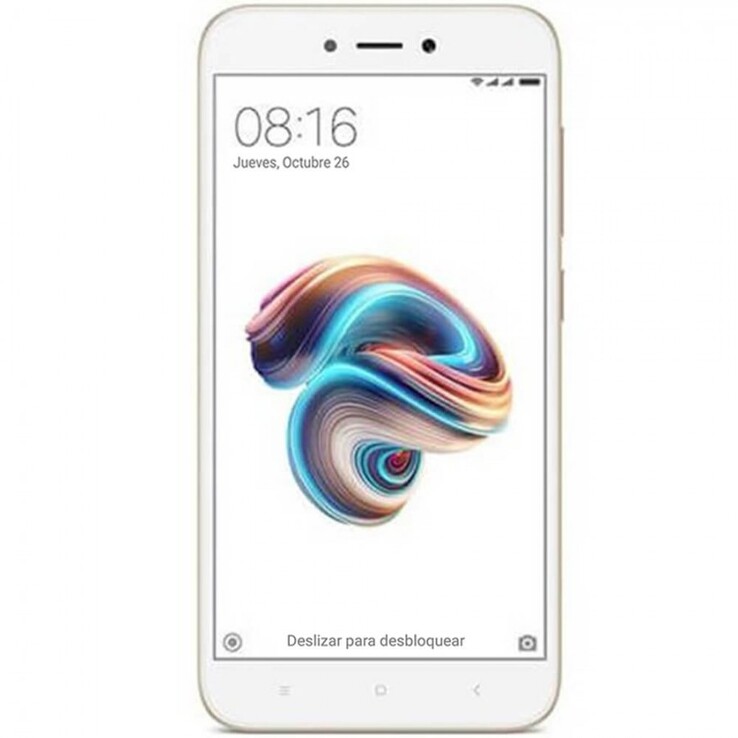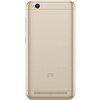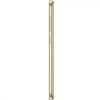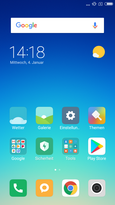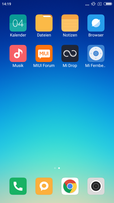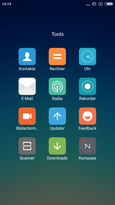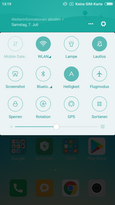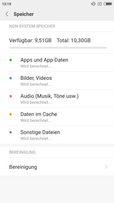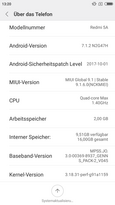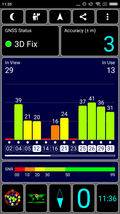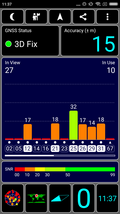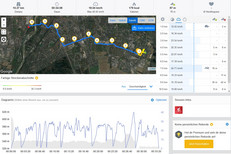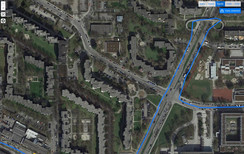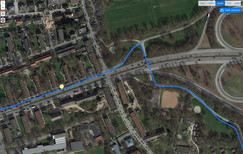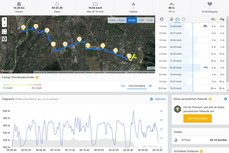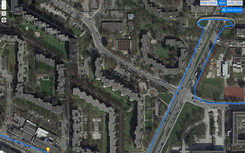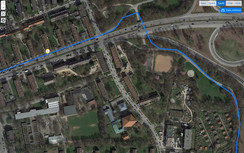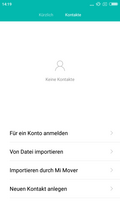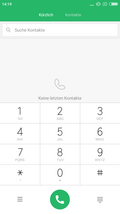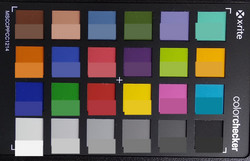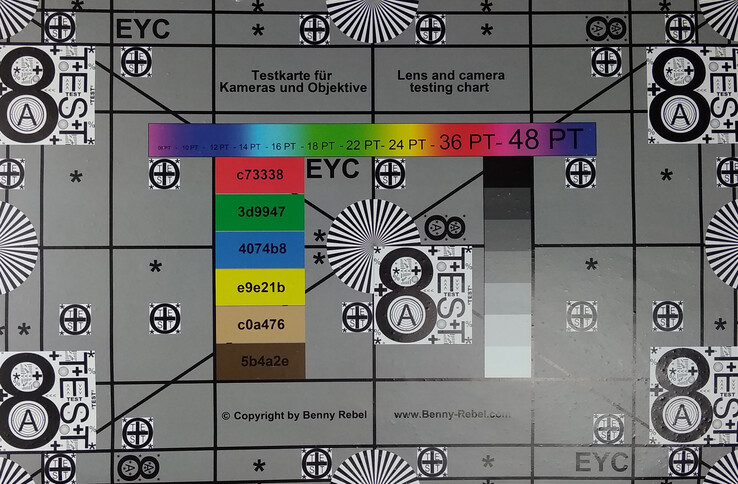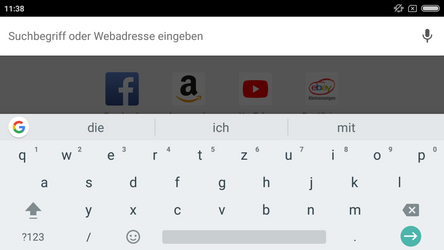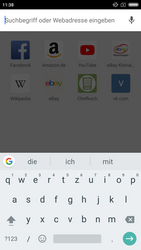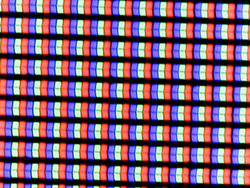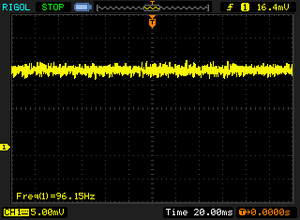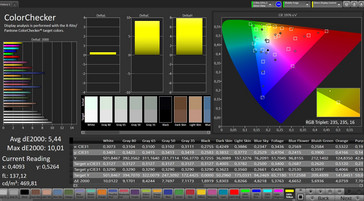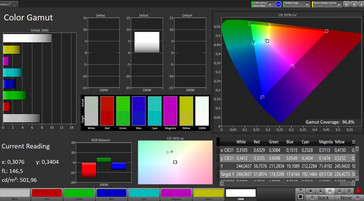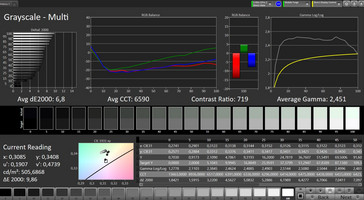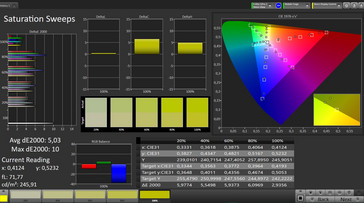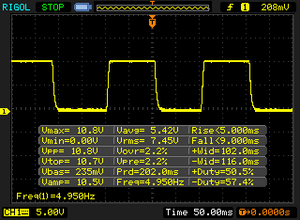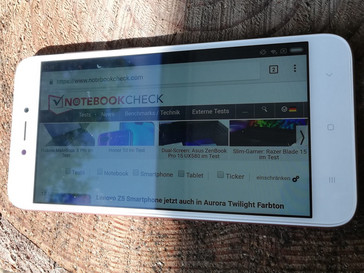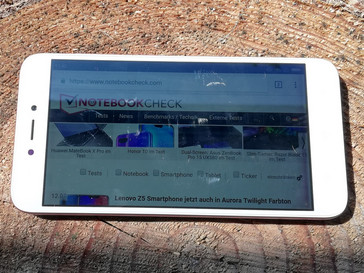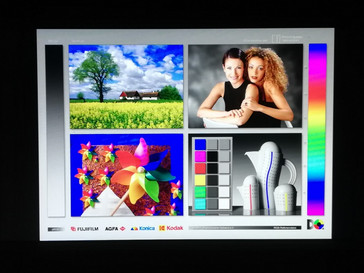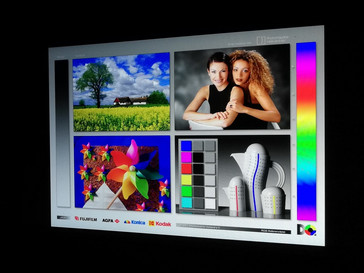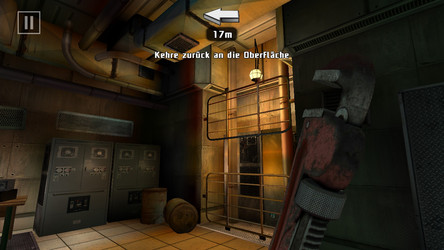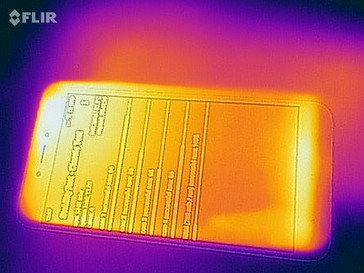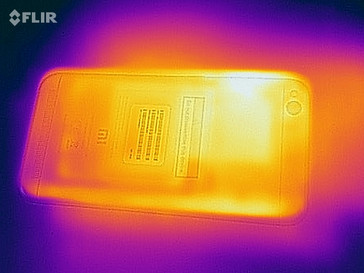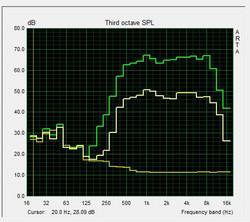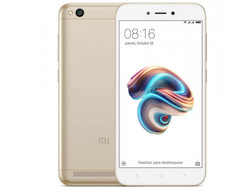Xiaomi Redmi 5A Smartphone Review
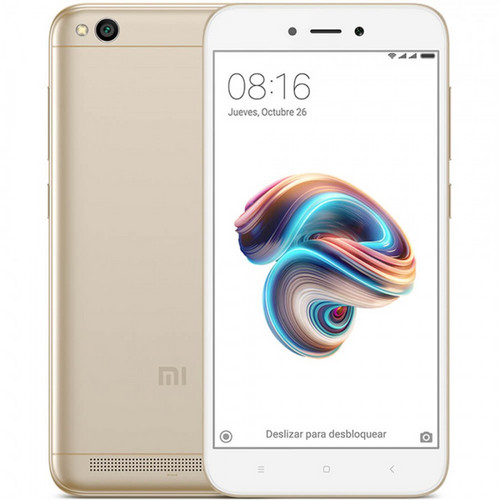
Xiaomi controls a significant share of the smartphone market and is distinguished from other Chinese smartphone manufacturers through its well-thought-through UI and well-built devices. This is why Xiaomi is able to compete with other big-name smartphone makers. Our current review device costs around 100 Euros ($116) and offers, supposedly, the best performance possible at this price point. It comes with an entry-level SoC and Android 7.1. Qualcomm’s Snapdragon 425 and Adreno 308 offer enough performance for daily tasks. In addition, the device comes with 2 GB of RAM and 16 GB of eMMC flash memory.
The competition offers smartphones with similar hardware, but such devices usually cost about 50 ($58) Euros more. Therefore, we have included in this review similarly-equipped devices that cost around 150 Euros ($174). The competing devices include Huawei’s Y6 (2018), the Honor 7A, Umidigi’s A1 Pro and the Nokia 2.
Case – Redmi 5A with a rigid plastic case
The Redmi 5A comes with a robust plastic case and is available in the following color schemes: Roségold, Gold and Dark Gray. The buttons on the right side of the device exhibit a minimal amount of wobbling. This is why the device feels very solid. Even though Xiaomi’s smartphone has rounded edges, it appears very angular, because the “rounded” edges protrude from the sides by about one millimeter.
The Redmi 5A is distinguished from the competition, above all, through its small size and low weight. In the hand, Xiaomi’s smartphone feels small, but premium. It is also very easy to handle.
Connectivity – Xiaomi smartphone with an infrared blaster
The Redmi 5A comes with an entry-level SoC from Qualcomm, the Snapdragon 425, and the Adreno 308 GPU. It has 2 GB of RAM and 16 GB of eMMC flash memory. Moreover, the smartphone also offers an IR blaster, which can be used to control stereo systems, DVD players and TVs. The Redmi 5A features two slots on the left side of the device. One slot can take one Nano SIM card and one Micro SD card and the other slot can take an additional Nano SIM card.
Data can be transferred through a wired connection with the help of the Micro-USB port. Headsets and speakers can be connected to the device via the 3.5-mm audio jack.
Software – Xiaomi Redmi 5A with Android Nougat
The Redmi 5A comes with Xiaomi’s proprietary launcher MIUI. At first glance, it looks like the traditional Android launcher, but it has different icons, Xiaomi’s proprietary apps and a different settings menu. The number of preinstalled apps is not very large and the apps can be disabled in the App settings. Moreover, the Xiaomi smartphone cannot be used by multiple users at the same time (i.e., only one user account is allowed).
Apps and data can be stored on an SD card. However, the preinstalled applications cannot be moved to an SD card and an SD card cannot be formatted as internal storage.
Communication and GPS – Xiaomi Redmi 5A is an LTE smartphone
The Redmi 5A can operate in most mobile networks. It supports the following mobile communication standards: GSM, 3G and LTE. The LTE module operates at Category 4 speeds (download: 150 Mbit/s, upload: 50 Mbit/s). The Redmi 5A also features support for the IEEE-802.11 standards b, g and n and Bluetooth 4.2.
The Wi-Fi performance of the Redmi 5A is comparable to that of the competition. However, with transfer rates of less than 50 Mbit/s, the Redmi 5A takes the next-to-last spot in the comparison chart below.
| Networking | |
| iperf3 transmit AX12 | |
| Umidigi A1 Pro | |
| Nokia 2 | |
| Huawei Y6 2018 | |
| Xiaomi Redmi 5A | |
| Honor 7A | |
| iperf3 receive AX12 | |
| Umidigi A1 Pro | |
| Nokia 2 | |
| Huawei Y6 2018 | |
| Xiaomi Redmi 5A | |
| Honor 7A | |
We use the app called "GPS Test" to determine how good the Xiaomi smartphone is at geo-location. Outdoors, the Redmi 5A exhibits a margin of error of 3 meters (~10 feet). Indoors, our review device manages to maintain a satellite connection and has a margin of error of 15 meters (~49 feet).
On our obligatory bike ride, the Redmi 5A proves to be quite accurate when compared to our reference-grade navigator Garmin Edge 520. In fact, the Redmi 5A is almost as reliable as the Garmin Edge 520. Only narrow turns are not registered properly. The margin of error of 3 meters (~10 feet) is noticeable when examining our route. Nevertheless, the Redmi 5A is well suited for navigation in most cases.
Telephony and Call Quality – Redmi smartphone with good call quality
The Redmi 5A comes with Xiaomi’s proprietary phone app. It offers a dial pad, which can be used to look for contacts or input numbers. The call history and contacts can be easily accessed through the navigation bar at the top.
When talking on the phone, neither our call partner nor we had any difficulty understanding each other. However, the maximum volume could have been higher. At high volume, the voices sound a little tinny.
Cameras – Xiaomi smartphone with a solid camera
The Redmi 5A comes with a 13 MP rear camera. It has an f/2.2 aperture, an LED flash and can record 1080p video at 30 FPS. The front-facing camera has a 5 MP sensor and takes good pictures during daylight. However, the selfies turn out a bit blurry even if you take them with a steady hand.
The main camera also takes good photos. Having said that, the shots taken with the rear camera seem somewhat dim. Panoramic shots look washed-out and the colors are hard to distinguish from each other in dark scenes. However, when close to an object, the images taken with the Redmi 5A appear more detailed and better resolved. Under low-light conditions, the image sensor can take in a lot of light and reproduce most objects quite faithfully. Nevertheless, shots taken in dimly-lit environments look very washed-out and blurry. There are a few filters and camera modes. The camera app does not offer any other features. The available options are limited to ISO sensitivity and white balance. The video quality is comparable to the photo quality. The video does not look shaky, thanks to image stabilization.
We use the X-Rite ColorChecker Passport to evaluate the color reproduction of the Redmi 5A’s camera. The colors of the Xiaomi smartphone look too dim most of the time. The gray and blue hues are affected the most. However, the black matches almost exactly the reference color in our image test.
Our test chart, which we photograph under controlled lighting conditions, is well reproduced. We did not observe a loss of detail or sharpness at the edges.
Accessories and Warranty – Redmi 5A does not come with any accessories
The box includes a USB charger and a Micro USB cable. Further accessories can be purchased from third-party manufacturers. Xiaomi also offers accessories for its devices. However, it does not offer any accessories specific to the Redmi 5A.
Xiaomi does not give any concrete information about the duration of the warranty. Because the manufacturer is not represented in every country, your device may be sent to a different nation to be repaired. In any case, the manufacturer’s warranty is provided. To learn more, visit our FAQ, which has a section that deals with warranty and associated issues. Please see our Guarantees, Return policies and Warranties FAQ for country-specific information.
Input Devices and Handling – Xiaomi touchscreen with some resistance
Google’s GBoard serves as the default keyboard. Therefore, typing messages and emails is very easy. The touchscreen reacts reliably and promptly to inputs. The drag-and-drop functionality does not work very well because the screen puts up too much resistance when moving fingers over it. The motion sensor responds to inputs with a delay, which should not be a big deal in day-to-day use.
Display – Redmi 5A: poor contrast ratio plus reflections
The Redmi 5A features a 5-inch IPS panel with a 16:9 aspect ratio. It has a native resolution of 1280x720, which is perfectly normal for a device in this price range and with this size. The screen brightness of about 500 cd/m² is also within a normal range for such a device. Here the Redmi 5A takes a spot in the middle of our comparison chart.
| |||||||||||||||||||||||||
Brightness Distribution: 84 %
Center on Battery: 503 cd/m²
Contrast: 689:1 (Black: 0.73 cd/m²)
ΔE ColorChecker Calman: 5.44 | ∀{0.5-29.43 Ø4.78}
ΔE Greyscale Calman: 6.8 | ∀{0.09-98 Ø5}
96.8% sRGB (Calman 2D)
Gamma: 2.451
CCT: 6590 K
| Xiaomi Redmi 5A IPS, 1280x720, 5" | Honor 7A IPS, 1440x720, 5.7" | Umidigi A1 Pro IPS, 1440x720, 5.5" | Nokia 2 IPS, 1280x720, 5" | Huawei Y6 2018 IPS, 1440x720, 5.7" | |
|---|---|---|---|---|---|
| Screen | 33% | 37% | 7% | 13% | |
| Brightness middle (cd/m²) | 503 | 417 -17% | 594 18% | 527 5% | 483 -4% |
| Brightness (cd/m²) | 499 | 395 -21% | 570 14% | 503 1% | 460 -8% |
| Brightness Distribution (%) | 84 | 88 5% | 86 2% | 91 8% | 88 5% |
| Black Level * (cd/m²) | 0.73 | 0.18 75% | 0.22 70% | 0.68 7% | 0.4 45% |
| Contrast (:1) | 689 | 2317 236% | 2700 292% | 775 12% | 1208 75% |
| Colorchecker dE 2000 * | 5.44 | 6.46 -19% | 6.63 -22% | 5.3 3% | 5.8 -7% |
| Colorchecker dE 2000 max. * | 10.01 | 10.72 -7% | 13.99 -40% | 9.2 8% | 12.6 -26% |
| Greyscale dE 2000 * | 6.8 | 5.8 15% | 9.2 -35% | 5.8 15% | 5 26% |
| Gamma | 2.451 90% | 2.423 91% | 2.24 98% | 2.12 104% | 2.6 85% |
| CCT | 6590 99% | 7839 83% | 8663 75% | 7894 82% | 7709 84% |
| Colorchecker dE 2000 calibrated * | 4.42 |
* ... smaller is better
Screen Flickering / PWM (Pulse-Width Modulation)
| Screen flickering / PWM not detected | |||
In comparison: 53 % of all tested devices do not use PWM to dim the display. If PWM was detected, an average of 8111 (minimum: 5 - maximum: 343500) Hz was measured. | |||
The contrast ratio of our review device is well below average (689:1) and the black value is also very high (0.73 cd/m²). This is why the images look washed-out and the colors are hard to tell apart. Moreover, the blacks do not look deep and appear very grayish.
Display Response Times
| ↔ Response Time Black to White | ||
|---|---|---|
| 14 ms ... rise ↗ and fall ↘ combined | ↗ 5 ms rise | |
| ↘ 9 ms fall | ||
| The screen shows good response rates in our tests, but may be too slow for competitive gamers. In comparison, all tested devices range from 0.1 (minimum) to 240 (maximum) ms. » 33 % of all devices are better. This means that the measured response time is better than the average of all tested devices (20.2 ms). | ||
| ↔ Response Time 50% Grey to 80% Grey | ||
| 34 ms ... rise ↗ and fall ↘ combined | ↗ 17 ms rise | |
| ↘ 17 ms fall | ||
| The screen shows slow response rates in our tests and will be unsatisfactory for gamers. In comparison, all tested devices range from 0.165 (minimum) to 636 (maximum) ms. » 45 % of all devices are better. This means that the measured response time is similar to the average of all tested devices (31.6 ms). | ||
Performance – Entry-level smartphone
The Redmi 5A comes with Qualcomm’s Snapdragon 425 and Adreno 308. Thanks to 2 GB of RAM, our review device can perform most daily tasks. Moreover, it can also run casual games and non-demanding 3D applications.
The benchmark results are all over the place. Overall, the Redmi 5A takes a spot in the middle of our comparison chart. The provided performance is more than acceptable for an entry-level device.
| AnTuTu v6 - Total Score (sort by value) | |
| Xiaomi Redmi 5A | |
| Honor 7A | |
| Umidigi A1 Pro | |
| Nokia 2 | |
| Huawei Y6 2018 | |
| Average Qualcomm Snapdragon 425 (MSM8917) (29054 - 39106, n=17) | |
| AnTuTu v7 - Total Score (sort by value) | |
| Xiaomi Redmi 5A | |
| Honor 7A | |
| Umidigi A1 Pro | |
| Huawei Y6 2018 | |
| Average Qualcomm Snapdragon 425 (MSM8917) (32557 - 46710, n=10) | |
| PCMark for Android | |
| Work performance score (sort by value) | |
| Xiaomi Redmi 5A | |
| Honor 7A | |
| Umidigi A1 Pro | |
| Nokia 2 | |
| Huawei Y6 2018 | |
| Average Qualcomm Snapdragon 425 (MSM8917) (3681 - 5253, n=17) | |
| Work 2.0 performance score (sort by value) | |
| Xiaomi Redmi 5A | |
| Honor 7A | |
| Umidigi A1 Pro | |
| Nokia 2 | |
| Huawei Y6 2018 | |
| Average Qualcomm Snapdragon 425 (MSM8917) (2829 - 3831, n=18) | |
| GFXBench 3.0 | |
| on screen Manhattan Onscreen OGL (sort by value) | |
| Xiaomi Redmi 5A | |
| Honor 7A | |
| Umidigi A1 Pro | |
| Nokia 2 | |
| Huawei Y6 2018 | |
| Average Qualcomm Snapdragon 425 (MSM8917) (3.7 - 11, n=18) | |
| Average of class Smartphone (18 - 166, n=159, last 2 years) | |
| 1920x1080 1080p Manhattan Offscreen (sort by value) | |
| Xiaomi Redmi 5A | |
| Honor 7A | |
| Umidigi A1 Pro | |
| Nokia 2 | |
| Huawei Y6 2018 | |
| Average Qualcomm Snapdragon 425 (MSM8917) (1.3 - 3, n=17) | |
| Average of class Smartphone (12 - 606, n=157, last 2 years) | |
The Redmi 5A does well in the browser benchmarks. Our review device is beaten by all of the competition only in Mozilla Kraken 1.1. In all other benchmarks, it offers an average level of performance. In day-to-day use, the Redmi 5A exhibits no weaknesses when surfing the web. Websites are loaded quickly and the media contents do not need a lot of time to load.
| JetStream 1.1 - Total Score | |
| Huawei Y6 2018 (Chrome 66) | |
| Honor 7A (Chrome 67) | |
| Xiaomi Redmi 5A (Chrome 67) | |
| Umidigi A1 Pro (Chrome 66) | |
| Average Qualcomm Snapdragon 425 (MSM8917) (15.5 - 18.7, n=16) | |
| Nokia 2 (Chrome 65) | |
| Octane V2 - Total Score | |
| Average of class Smartphone (2228 - 121337, n=201, last 2 years) | |
| Honor 7A (Chrome 67) | |
| Xiaomi Redmi 5A (Chrome 67) | |
| Umidigi A1 Pro (Chrome 66) | |
| Average Qualcomm Snapdragon 425 (MSM8917) (2411 - 3374, n=17) | |
| Huawei Y6 2018 (Chrome 66) | |
| Nokia 2 (Chrome 65) | |
| Mozilla Kraken 1.1 - Total | |
| Nokia 2 (Chrome 65) | |
| Huawei Y6 2018 (Chrome 66) | |
| Umidigi A1 Pro (Chrome 66) | |
| Honor 7A (Chrome 67) | |
| Average Qualcomm Snapdragon 425 (MSM8917) (10742 - 16192, n=17) | |
| Xiaomi Redmi 5A (Chrome 67) | |
| Average of class Smartphone (257 - 28190, n=156, last 2 years) | |
* ... smaller is better
The memory performance is above average for a device in this price range. While the internal eMMC flash memory can hold its own against the competition, the SD card reader also provides above-average performance with our reference-grade SD card Toshiba Exceria Pro M501. In everyday use, the good memory performance is reflected in short loading times.
| Xiaomi Redmi 5A | Honor 7A | Umidigi A1 Pro | Nokia 2 | Huawei Y6 2018 | Average 16 GB eMMC Flash | Average of class Smartphone | |
|---|---|---|---|---|---|---|---|
| AndroBench 3-5 | 5% | -8% | -22% | 2% | -31% | 2088% | |
| Sequential Read 256KB (MB/s) | 293.8 | 254.8 -13% | 269.2 -8% | 131.1 -55% | 254.3 -13% | 164.5 ? -44% | 2223 ? 657% |
| Sequential Write 256KB (MB/s) | 49.86 | 72.5 45% | 44.4 -11% | 50.8 2% | 65.6 32% | 43 ? -14% | 1838 ? 3586% |
| Random Read 4KB (MB/s) | 42.32 | 39.2 -7% | 29.6 -30% | 17.44 -59% | 38.8 -8% | 21.7 ? -49% | 295 ? 597% |
| Random Write 4KB (MB/s) | 9.28 | 9.4 1% | 10.2 10% | 8.1 -13% | 9 -3% | 8.08 ? -13% | 335 ? 3510% |
| Sequential Read 256KB SDCard (MB/s) | 84.9 ? | 84.9 ? 0% | 81 ? -5% | 81.9 ? -4% | 84.9 ? 0% | 59.1 ? -30% | |
| Sequential Write 256KB SDCard (MB/s) | 62.6 ? | 65.4 ? 4% | 58.8 ? -6% | 61.2 ? -2% | 64 ? 2% | 39.8 ? -36% |
Games – The Redmi 5A is good for casual games
The Redmi 5A comes with the Adreno 308 graphics unit. It is an entry-level GPU suitable for running simple applications. Most games from the Google Play Store are playable, but only on the low settings. Moreover, users will occasionally have to contend with long loading times.
The games we tested ran without any problems. However, the touchscreen puts up way too much resistance, which makes gaming over a prolonged period somewhat uncomfortable. Moreover, when playing games that utilize the motion sensor, users will have to contend with a slight delay, because the screen does not react to inputs from the motion sensor right away.
Emissions - Xiaomi smartphone with a good sound quality
Temperature
The Redmi 5A does not become hot. When idle, the surface temperatures remain constantly below 30 °C (86 °F). Under load, the temperatures slightly exceed the 40 °C (104 °F) mark. Therefore, drops in performance due to overheating are highly unlikely.
(±) The maximum temperature on the upper side is 42.5 °C / 109 F, compared to the average of 35.2 °C / 95 F, ranging from 21.9 to 247 °C for the class Smartphone.
(±) The bottom heats up to a maximum of 40.2 °C / 104 F, compared to the average of 34 °C / 93 F
(+) In idle usage, the average temperature for the upper side is 28.3 °C / 83 F, compared to the device average of 32.9 °C / 91 F.
Speakers
The speakers of the Redmi 5A are not particularly loud and are optimized for the upper-mid tones. All other tones above or below are poorly reproduced. Nevertheless, the sound quality is still quite good. The voices are reproduced especially well.
The 3.5-mm audio jack can be used to connect headphones or external speakers to the device. It offers a tight fit and leaves a solid impression. The headphone jack delivers good audio quality. We did not observe any abnormalities when listening to music with the external speakers connected via Bluetooth.
Xiaomi Redmi 5A audio analysis
(±) | speaker loudness is average but good (77.1 dB)
Bass 100 - 315 Hz
(-) | nearly no bass - on average 31.8% lower than median
(±) | linearity of bass is average (10.7% delta to prev. frequency)
Mids 400 - 2000 Hz
(+) | balanced mids - only 2.2% away from median
(+) | mids are linear (5.9% delta to prev. frequency)
Highs 2 - 16 kHz
(+) | balanced highs - only 3.1% away from median
(+) | highs are linear (3.1% delta to prev. frequency)
Overall 100 - 16.000 Hz
(±) | linearity of overall sound is average (28.5% difference to median)
Compared to same class
» 74% of all tested devices in this class were better, 4% similar, 22% worse
» The best had a delta of 11%, average was 35%, worst was 134%
Compared to all devices tested
» 85% of all tested devices were better, 3% similar, 12% worse
» The best had a delta of 4%, average was 24%, worst was 134%
Honor 7A audio analysis
(±) | speaker loudness is average but good (78.6 dB)
Bass 100 - 315 Hz
(-) | nearly no bass - on average 58.8% lower than median
(+) | bass is linear (0% delta to prev. frequency)
Mids 400 - 2000 Hz
(-) | nearly no mids - on average 58.8% lower than median
(+) | mids are linear (0% delta to prev. frequency)
Highs 2 - 16 kHz
(-) | nearly no highs - on average 58.8% lower than median
(+) | highs are linear (0% delta to prev. frequency)
Overall 100 - 16.000 Hz
(-) | overall sound is not linear (113.1% difference to median)
Compared to same class
» 87% of all tested devices in this class were better, 2% similar, 11% worse
» The best had a delta of 11%, average was 35%, worst was 134%
Compared to all devices tested
» 96% of all tested devices were better, 1% similar, 3% worse
» The best had a delta of 4%, average was 24%, worst was 134%
Battery Life – Smartphone with a long battery life
Energy Consumption
The Redmi 5A consumes a little less power than the competition. It draws 1.02 watts when idle and 4.8 watts under load. This is why it leaves most competing devices in the dust when it comes to power consumption. Here, the Nokia 2 is the only device that is more energy efficient than the Redmi 5A.
The included 5-watt charger does not offer a lot of reserves, but it can cover the power draw of our review device. Thanks to fast charging, the 3000-mAh battery takes less than 2 hours to fully charge.
| Off / Standby | |
| Idle | |
| Load |
|
Key:
min: | |
| Xiaomi Redmi 5A 3000 mAh | Honor 7A 3000 mAh | Umidigi A1 Pro 3150 mAh | Nokia 2 4100 mAh | Huawei Y6 2018 3000 mAh | Average Qualcomm Snapdragon 425 (MSM8917) | Average of class Smartphone | |
|---|---|---|---|---|---|---|---|
| Power Consumption | -27% | -54% | 12% | -62% | -29% | -47% | |
| Idle Minimum * (Watt) | 1.2 | 1.3 -8% | 1.8 -50% | 0.55 54% | 1.7 -42% | 1.113 ? 7% | 0.848 ? 29% |
| Idle Average * (Watt) | 1.5 | 1.6 -7% | 2.3 -53% | 1.02 32% | 2.5 -67% | 2.19 ? -46% | 1.434 ? 4% |
| Idle Maximum * (Watt) | 1.8 | 2.9 -61% | 3.2 -78% | 1.09 39% | 3.2 -78% | 2.55 ? -42% | 1.618 ? 10% |
| Load Average * (Watt) | 2.9 | 3.7 -28% | 4.7 -62% | 4.48 -54% | 5.2 -79% | 4.32 ? -49% | 7.01 ? -142% |
| Load Maximum * (Watt) | 4.8 | 6.4 -33% | 6 -25% | 5.32 -11% | 6.8 -42% | 5.5 ? -15% | 11.3 ? -135% |
* ... smaller is better
Battery Life
The low power draw of the Redmi 5A has a positive effect on battery life. In our practically oriented Wi-Fi test, the Xiaomi smartphone lasts for almost 15 hours. This is why our review device takes the top spot in the comparison chart below.
| Xiaomi Redmi 5A 3000 mAh | Honor 7A 3000 mAh | Umidigi A1 Pro 3150 mAh | Nokia 2 4100 mAh | Huawei Y6 2018 3000 mAh | |
|---|---|---|---|---|---|
| Battery runtime | |||||
| WiFi v1.3 (h) | 16.8 | 11 -35% | 10.1 -40% | 14 -17% | 10.7 -36% |
Pros
Cons
Verdict – Compact smartphone with solid performance
The Xiaomi Redmi 5A is a compact device with an unbeatable price-to-performance ratio. Nevertheless, it can only be recommended to those who do not need a lot of power and who will use it chiefly for taking occasional snapshots or sending messages via WhatsApp. That being said, the Redmi 5A provides enough performance for the smooth operation of the OS (Android 7.1).
Besides the advantages that the compact smartphone provides, there are also a few disadvantages that come with the Redmi 5A. The contrast ratio and the black value of the display are barely tolerable and the reflections make reading screen content outdoors difficult.
The Xiaomi Redmi 5A is a solid smartphone that is very easy to handle. With its price tag of less than 100 Euros ($116), it offers the best price-to-performance ratio in this price range.
Xiaomi Redmi 5A
- 07/16/2018 v6 (old)
Mike Wobker




